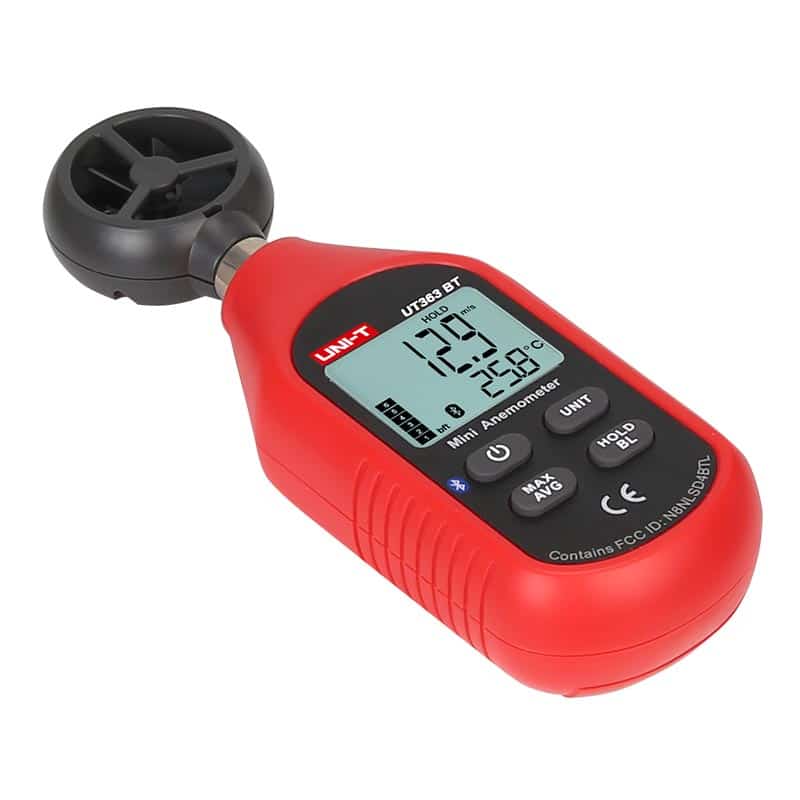Selecting the Right Anemometer: A Comprehensive Acquiring Overview
Selecting the Right Anemometer: A Comprehensive Acquiring Overview
Blog Article
Anemometers Introduced: Comprehending Their Importance in Environmental Surveillance and Safety And Security Actions
The function of anemometers in ecological monitoring and security procedures is often ignored, yet their significance is indisputable. These instruments have a lengthy background rooted in clinical questions and technical innovations, developing to end up being crucial devices in numerous fields. From weather forecasting to air travel safety and security, anemometers play an essential role in giving precise data that notifies decision-making procedures and improves general safety and security. Recognizing the complexities of anemometers introduces a globe of essential understandings that are basic to our understanding of the atmosphere and the steps we take to ensure safety and security.
History of Anemometers
The advancement of anemometers can be mapped back to the ancient civilizations where primary wind measuring tools were first made use of. One of the earliest recognized anemometers was the hemispherical cup anemometer invented by Leon Battista Alberti in the 15th century.
Over the years, improvements in innovation led to the development of even more modern anemometers, consisting of ultrasonic anemometers and laser Doppler anemometers, supplying increased precision and efficiency in measuring wind speed and direction. The background of anemometers showcases an exceptional trip of innovation and development in the field of meteorology.
Types of Anemometers
Throughout the area of meteorology, various types of anemometers have been established to accurately determine wind rate and instructions. Sonic anemometers make use of ultrasonic signals to determine wind rate and instructions precisely. Hot-wire anemometers run based on the concept that the cooling result of wind on a heated wire is proportional to the wind speed.
Applications in Meteorology
Having actually reviewed the numerous kinds of anemometers made use of in weather forecasting for gauging wind speed and instructions, it is necessary to discover their functional applications in the area. Anemometers play a critical function in meteorology by supplying real-time and precise information on wind problems (anemometer). Meteorologists use anemometers to check wind rate and direction to anticipate weather condition patterns, issue cautions for severe climate occasions like twisters, tornados, and storms, and examine weather for aeronautics safety and security
In meteorology, anemometers aid in understanding local and neighborhood wind patterns, which are vital for forecasting weather condition changes and establishing weather patterns. These devices are likewise used in research to research microclimates, city heat islands, and air contamination diffusion. In addition, anemometers are used in farming to optimize plant administration practices, such as irrigation and chemical application, based on wind conditions.
Significance in Air Travel Safety
An indispensable facet of making sure aeronautics safety exists in the precise surveillance of wind conditions making use of anemometers. Anemometers play a vital function in aeronautics by offering real-time data on wind rate and direction, aiding pilots in making informed decisions during landing, flight, and liftoff. Unpredictable imp source and strong winds can substantially impact airplane procedures, making it vital for aeronautics authorities to count on precise wind dimensions to ensure the safety of passengers and crew.

In the vibrant environment of air travel, where also small adjustments in wind speed and direction can have extensive effects, anemometers stand as crucial devices for promoting safe and safe flight.
Function in Environmental Research Study
Anemometers play a vital duty in environmental research by providing vital data on wind speed and instructions. By properly gauging wind features, anemometers aid researchers evaluate the motion of contaminants in the air, evaluate the influence of industrial exhausts, and predict the spread of pollutants in the atmosphere.


Final Thought
In conclusion, anemometers have played a critical role in ecological tracking and safety steps. Comprehending the importance of anemometers is important for precisely determining wind rate and direction, which is crucial for anticipating climate patterns, ensuring risk-free aeronautics procedures, and carrying out ecological research studies.
One of the earliest recognized anemometers was the hemispherical cup anemometer invented by Leon Battista Continue Alberti in the 15th century. Over the years, developments in innovation led to the development of even more contemporary anemometers, consisting of ultrasonic anemometers and laser Doppler anemometers, providing boosted precision and effectiveness in gauging wind rate and instructions. Hot-wire anemometers operate based on the concept that the cooling impact of wind on a heated cable is symmetrical to the wind rate. Meteorologists make use of anemometers to check wind speed and instructions to anticipate climate patterns, problem warnings for serious weather events like tornadoes, cyclones, and tornados, and assess atmospheric problems for aviation safety.
Recognizing the value of anemometers is vital for precisely measuring wind rate and instructions, which is important for anticipating climate patterns, guaranteeing risk-free aviation procedures, and carrying out advice environmental studies. (anemometer)
Report this page